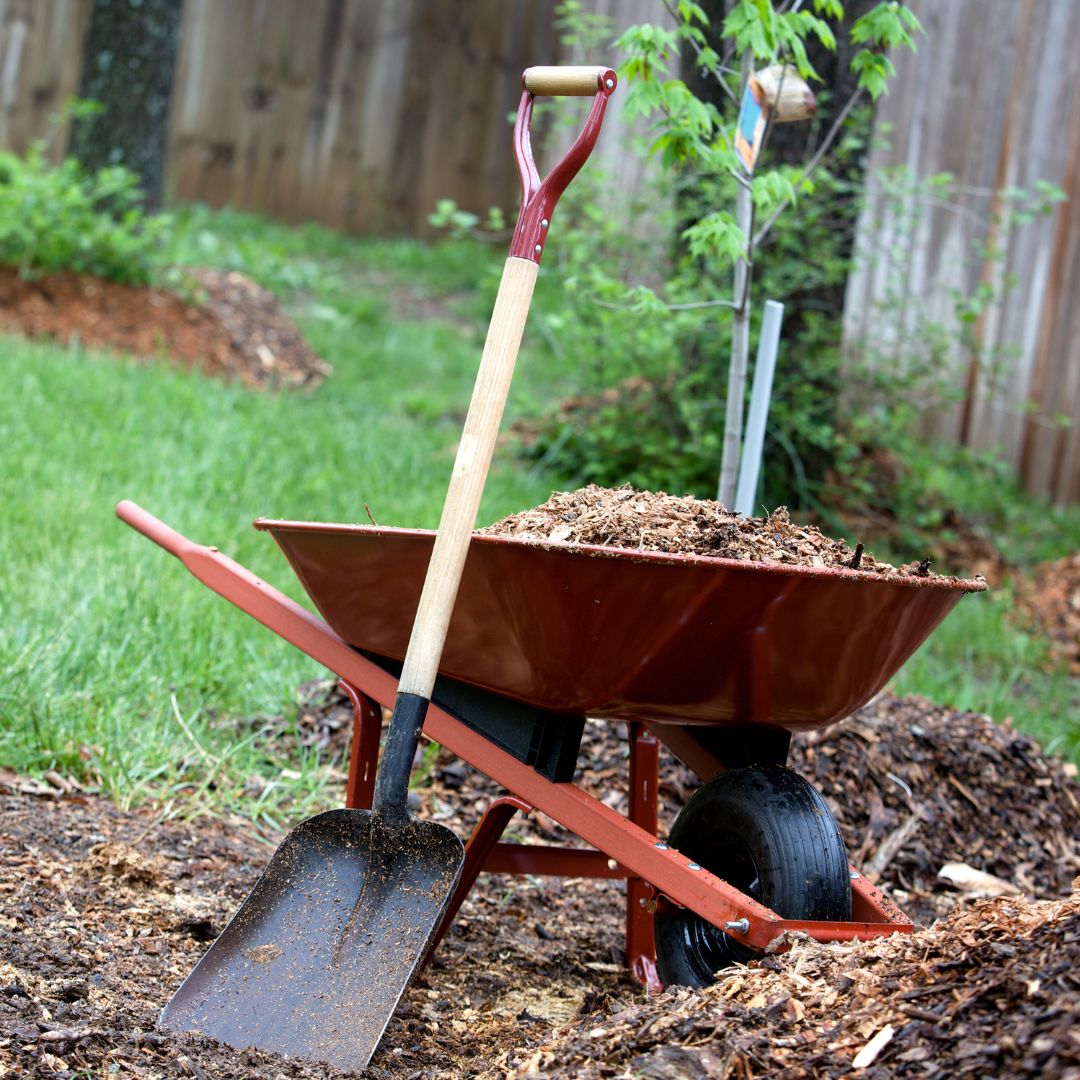Winterize Your Trees and Shrubs
by Niki Kenniff
Agriculture and Horticulture Program Assistance
The weather may soon be frightful, but there is still time for a few outside tasks to ensure that your perennials, trees and shrubs are ready for winter. Temperatures can fluctuate between very mild days and bitterly cold stretches with the highs well below freezing. These ups and downs can wreak havoc on plants- especially if they were recently planted or moved over the past summer or fall.
A simply layer of mulch applied to plants can yield benefits throughout the winter months. It is

best to apply mulch before the ground freezes and before we receive the first covering of snow. The addition of mulch for winter can help moderate the temperature of the soil and roots around the plants. Frost heaving, or the process of repeated freezing and thawing of the soil causing it to expand and contract, is another danger to plants over the winter month. Frost heaving can actually lift out plants, exposing the crown and roots to freezing temperatures and drying winds. The addition of mulch will contribute to a more consistent soil temperature and limit this heaving process. Another benefit of mulch is more consistent moisture in the soil surrounding the roots. Dry periods can be hard on plants, even during the winter months and mulch will help to maintain moisture levels around the plant.
It is important to apply a 2-to-4-inch layer of mulch around woody trees and shrubs, leaving a few inches of space around the trunk(s) and then extending out at least 3 feet. Avoid mounding mulch around the trunk as this common practice can lead to excess water retention at the truck area and subsequent trunk rot and loss of the tree. Organic mulches work best; wood chips, shredded bark, chopped leaves and straw that is free from seeds are great options.
Another issue impacting trees and shrubs throughout winter is sunscald. Sunscald, sometimes just referred to as winter injury, occurs when warm temperatures and sunshine cause the tissue on the south or southwest sides of the plant to thaw only to refreeze once the temperature drops or the sun goes down. This process leads to damage to the cambium layer of the tree and can make the tree susceptible to further issues with insects or pathogens.
Sunscald is most common on trees and shrubs with thin bark and those that are newly planted. Some impacted include, maple, linden, birch, willow and fruit trees.
The application of a white tree wrap around the tree truck for the winter months can help to reflect the sun and minimize the temperature fluctuation within the tree truck. Only white material should be used for this purpose as darker colors will only absorb the warmth from the sun and increase the likelihood of damage. The tree wrap should be removed in the spring once the risk of freezing temperatures has passed.
Winter can be a beautiful and beneficial part of the year and by following a few simple steps, you can ensure that your plants have all they need to survive and thrive for years to come.